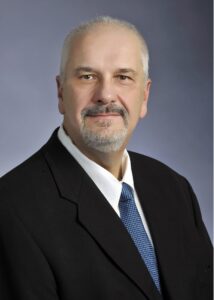Muskellunge Stocking at MWCD Lakes
On September 19th, ODNR released 1100 juvenile Muskellunge into Leesville Lake at the North Fork Marina boat launch and on September 25th, they also released 2370 fish into Piedmont Lake. This is a routine stocking event that has been happening almost every year since 1965. Muskellunge, Esox masquinongy, or “Muskie” are a large, predatory fish species native to Ohio. Currently there are only a few naturally reproducing populations, one of them being the Little Muskingum River, although historically their distribution was widespread across the rivers in Ohio. These predators routinely reach 50 inches in length, 50 pounds, and live for 30 years in their natural environments. They are a sport fisherman favorite, elusive and fun to fight with on the reel, with large heads and many sharp teeth. Because of their high sportfish value, they are stocked in selected reservoirs in Ohio.
The stocking of Muskie and other sport fish is done to boost populations in reservoirs where sufficient spawning habitat does not exist. Muskellunge are usually not able to reproduce in inland man-made lakes. In natural river systems, Muskie will lay their eggs on flooded vegetation in early spring. Man-made reservoirs typically have the water levels drawn down in winter and early spring to hold back the water from these floods, so the Muskie don’t have the needed vegetation in place to protect and hold their eggs.
A second reason for the lack of reproductive success of Muskie in lakes is the dense populations of predators like Largemouth Bass. When Muskie hatch, they tend to hover in place and wait for prey to pass by, and don’t hide down in vegetation where they might be safer. Bass are aggressive predators and will gobble up most of the Muskie that manage to hatch. Because of this threat, fish hatcheries raise Muskies until they are too big to be eaten by the Largemouth, then release them back into the reservoirs.
In April of each year, an ODNR field crew captures live male and female Muskellunge from Leesville Lake. Eggs are extracted from the gravid (meaning full of eggs) females, and then fertilized using sperm collected from the males. These fertilized eggs are then taken to the London Ohio Fish Hatchery and the Kincaid State Fish Hatchery where they are raised for 6 months. In September, the juveniles are then transported back to Leesville Lake in a large truck with a holding tank and aerators to give a continuous supply of oxygen. The Muskie are then released into the water using a pipe attached from the bottom of the tank that flows into the lake. The Muskie will then continue their life cycle, growing to maturity within 3 to 4 years.
In addition to their sportfish value, Muskellunge provide an important ecological and conservation value. Although they can’t spawn naturally within the reservoirs, they do add to the biological diversity and as a large predatory fish they help balance fish populations in the food web. This is one of many examples of how recreation and conservation weave together. Sport fish such as Muskellunge, Largemouth Bass, Yellow Perch, and Channel Catfish are all native fish species that add wildlife diversity to the reservoirs, promoting both ecological health, and a draw for fishermen. The revenue generated from these fisheries goes to back organizations like MWCD, as well as state and federal agencies so that fish stocking and other conservation projects can continue for years to come.







